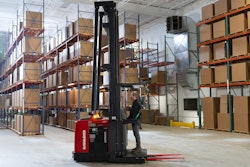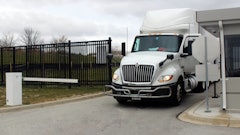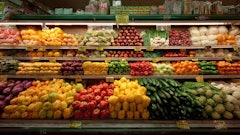
Despite digital transformation occurring within nearly every sector, there have always been a few that took a backseat. For instance, prior to the Coronavirus disease (COVID-19), many people preferred (and still do prefer) to shop for their food in-person. They like to stroll the aisles, feel the produce and understand exactly what they’re receiving to feed both themselves and their families. It’s also oftentimes considered a Sunday ritual.
However, when the pandemic hit, food delivery (both grocery- and restaurant-related) flew to the top of the digital transformation list. With many scared to enter grocery stores, food delivery services saw some of the biggest spikes in demand across nearly every industry.
Of course, this complete transformation of the retail grocery environment has led to new consumer needs and demands, forcing brands to reinvent their customer experience and automate their supply chain. Package these two concepts together and you have a strong path forward in the new age of digital groceries.
2020’s effect on supply chain volatility
Supply chain volatility doesn’t just mean back-ordered products and unhappy customers - sometimes it’s doubly serious and detrimental. For instance, when COVID-19 outbreaks shut down meat processing plants across the United States last year, animals were suddenly stranded; with plants unable to operate, it created a “backlog” of pigs. With nowhere to send them, many farmers had to euthanize them.
And, this kind of volatility can affect every industry in very different, but very real ways, causing companies to make difficult decisions to stay afloat while satisfying an unstable connection between supply and demand.
Fortunately, there are technologies and ways to automate data that can enhance companies’ ability to react and even predict when anomalies may happen. This includes predictive analytics software that can automatically recalibrate given a shake-up in the system. Take, for instance, a pandemic, or a historic weather event. Moving forward, this is likely to serve as the foundation for many companies’ supply chain efforts, with human intervention serving the purpose of oversight and assistance.
Click here to hear more about data and analytics in the supply chain:
Back-end technology -- Just the tip of the iceberg
However, back-end technology that handles supply chain efficiency is just the tip of the iceberg. At the same time, customers need increased and personalized interaction from the brands they frequent, largely due to the changing times. In the face of uncertainty - surrounding new regulations, boundaries and beyond - customers need to constantly be reassured that they’re receiving what they’re paying for in a safe, smart way. Even more so, they need to know that the brand they’re in contact with is keeping them in mind throughout the entire customer journey.
As such, new channels for customer service have been adopted, with omnichannel communications coming to the forefront as a way to stay connected with customers.
Impact on the customer relationship (and why it matters)
Technology that allows companies to proactively communicate with customers will increase a retailer's value add, stickiness with customer retention and settle consumer frustrations before they come. The retailer is able to provide their customers with real-time updates and a form of personalized service they’ve typically only experienced in-store, while providing a wealth of automatically generated data on the availability of products. Access to supply chain data allows companies to handle disruptions easier from an internal perspective - by having advance notice of a shortage - and externally, by getting ahead of customer concerns and alerting them to supply chain disruptions (and more commonly, keeping them in the loop when their favorite products are available or when and where they can find them back in stock following a shortage).
Regardless, supply chain disruption isn’t an issue birthed by COVID-19. Global and national events have long impacted a consumer's ability to access certain goods. Never forget the few years running that romaine lettuce had its own particular supply chain issues. And, we’re already seeing the trickle-down impact from COVID-19 on all industries; for instance, how a decrease in car purchases during COVID-19 has now led to a semiconductor shortage.
But, what the pandemic did significantly impact is how customers prefer to interact with their favorite stores, and that’s via proactive and personalized technology platforms. With customer experience expectations rising from the consumer end, distributors and retailers need to be ahead of the curve and start adopting this technology now before the “New Normal” stops being a novelty and becomes the expected standard.



















